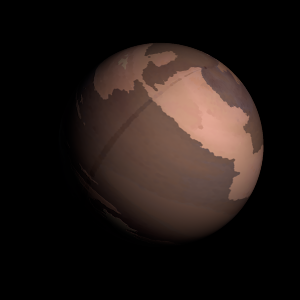|
|
Space Astro
|
Info for exoplanet "Muvar"
| Scientific (actual) data |
|---|
| Name | Kepler-1643 b |
| Planet status | Confirmed |
| Radius | 0.205 |
| Orbital period | 5.34265 |
| Discovered | 2016 |
| Updated | 2021-02-05 |
| Tconj | 2454970 |
| Publication | Announced on a website |
| Detection type | Primary Transit |
| Alternate names | 2MASS J20014344+4445036 b, K06186.01, KIC 8653134 b, KOI-6186 b, KOI-6186.01, WISE J200143.35+444504.4 b |
| Star name | Kepler-1643 |
| Right ascension | 300.43° |
| Declination | 44.75° |
| Mag j | 12.284 |
| Mag h | 11.764 |
| Mag k | 11.636 |
| Star distance | 414 |
| Star metallicity | -0.01 |
| Star mass | 0.92 |
| Star radius | 0.88 |
| Star age | 3.89 |
| Star temperature | 5508 |
| Star alternate names | 2MASS J20014344+4445036, KIC 8653134, KOI-6186, WISE J200143.35+444504.4 |
| Wikipedia article | Kepler-1643 b |
Back
| |
| Fictional info (?) |
|---|
| Suggested name | Muvar |
| Planet type | Cold planet |
| Because of its rapid rotation, the planet's shape is that of an oblate spheroid (it has a slight but noticeable bulge around the equator).
The largest moon is mostly inhabitated by aggressive and medieval bacteria, the "Romi", which survive by hunting anything they find. They are believed to be closely related to the Baqow'unex and have scales and vary in size from 1 to 2 meters. The Romi are able to thrive at temperatures from 70 to 140°C but are killed by the acidic environment. |
| Estimated population | 70000 |
| Atmosphere | Carbon dioxide | 97% |
| Oxygen | 2.4% |
| Methane | 0.44% |
| Water | 0.021% |
| Atmospheric pressure | 90 bar |
 |
| Moon | Osomos-ame | Huge potato shaped oceanic planetoid |
| Google search for Muvar |
|
Website by Joachim Michaelis
|
|
|
|